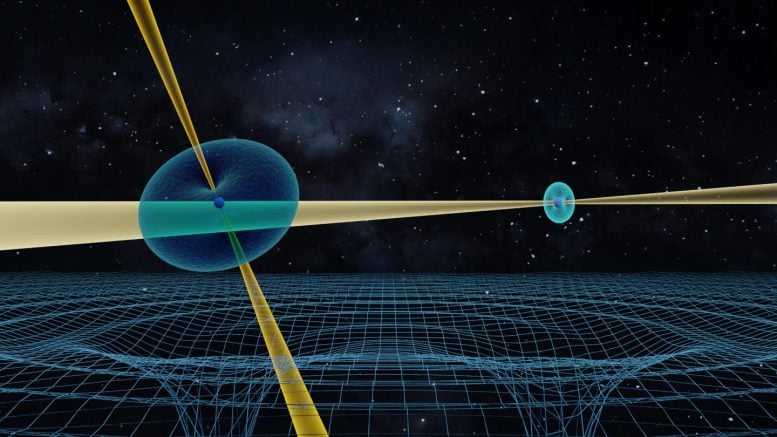
Researchers have conducted a 16-year-long experiment to challenge Einstein’s theory of general relativity. The international team looked to the stars – a pair of extreme stars called pulsars to be precise – through seven radio telescopes across the globe. Credit: Max Planck Institute for Radio Astronomy
An international team of astronomers, using a global network of radio telescopes, observed a binary pulsar system for 16 years, validating Einstein’s theory of general relativity with unprecedented precision and exploring new gravitational phenomena.
Since Einstein formulated his theory of general relativity (GR), the geometric theory of gravity that fundamentally altered our view of the universe, more than a century has passed. Yet astronomers continue to put it through rigorous testing in an effort to uncover deviations from this accepted theory. The explanation is straightforward: any proof of physics other than GR would provide fresh insights into the Universe and shed light on some of its greatest mysteries.
One of the most rigorous tests ever was recently conducted by an international team of astronomers led by Michael Kramer of the Max Planck Institute for Radio Astronomy (MPIfR) in Bonn, Germany. Using seven radio telescopes from across the world, Kramer and his colleagues observed a unique pair of pulsars for 16 years. In the process, they observed effects predicted by GR for the first time, and with an accuracy of at least 99.99%!
In addition to researchers from the MPIfR, Kramer and his associates were joined by researchers from institutions in ten different countries – including the Jodrell Bank Centre for Astrophysics (UK), the ARC Centre of Excellence for Gravitational Wave Discovery (Australia), the Perimeter Institute for Theoretical Physics (Canada), the Observatoire de Paris (France), the Osservatorio Astronomico di Cagliari (Italy), the South African Radio Astronomy Observatory (SARAO), the Netherlands Institute for Radio Astronomy (ASTRON), and the Arecibo Observatory.
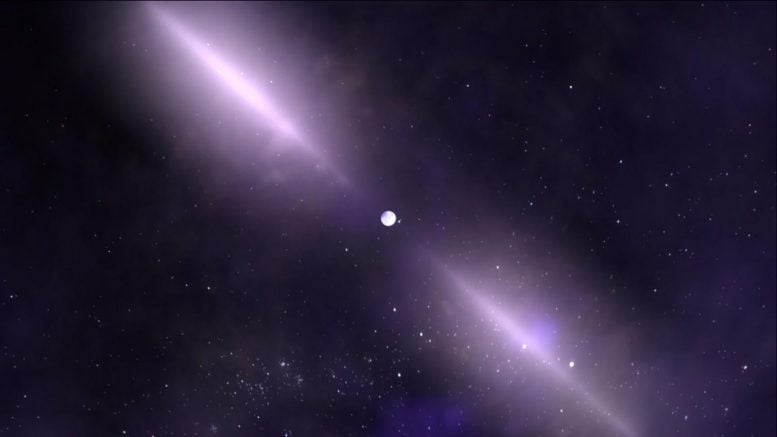
Pulsars are fast-spinning neutron stars that emit narrow, sweeping beams of radio waves. Credit: NASA’s Goddard Space Flight Center
A unique kind of fast revolving, intensely magnetic neutron star is known as a “radio pulsar.” The poles of these very dense structures generate strong radio beams that, when paired with their quick rotation, provide a strobing effect like a lighthouse. Because they provide a plethora of knowledge about the physics regulating ultra-compact objects, magnetic fields, the interstellar medium (ISM), planetary physics, and even cosmology, pulsars are of great interest to astronomers.
In addition, the extreme gravitational forces involved allow astronomers to test predictions made by gravitational theories like GR and Modified Newtonian Dynamics (MOND) under some of the most extreme conditions imaginable. For the sake of their study, Kramer and his team examined PSR J0737-3039 A/B, the “Double Pulsar” system located 2,400 light-years from Earth in the constellation Puppis.
This system is the only radio pulsar binary ever observed and was discovered in 2003 by members of the research team. The two pulsars that make up this system have rapid rotations – 44 times a second (A), once every 2.8 seconds (B) – and orbit each other with a period of just 147 minutes. While they are about 30% more massive than the Sun, they measure only about 24 km (15 mi) in diameter. Hence, their extreme gravitational pull and intense magnetic fields.
In addition to these properties, the rapid orbital period of this system makes it a near-perfect laboratory for testing theories of gravitation. As Prof. Kramer said in a recent MPIfR press release:
“We studied a system of compact stars that is an unrivalled laboratory to test gravity theories in the presence of very strong gravitational fields. To our delight we were able to test a cornerstone of Einstein’s theory, the energy carried by gravitational waves, with a precision that is 25 times better than with the Nobel-Prize winning Hulse-Taylor pulsar, and 1000 times better than currently possible with gravitational wave detectors.”
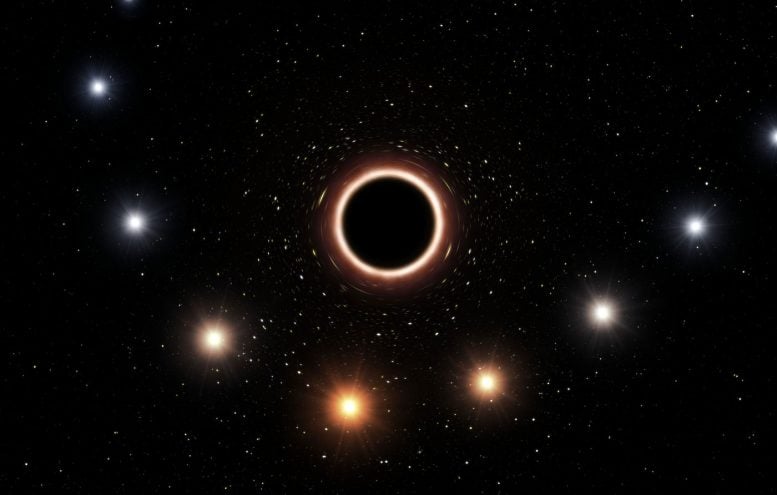
Artist’s impression of the path of the star S2 passing very close to Sagittarius A*, which also allows astronomers to test predictions made by General Relativity under extreme conditions. Credit: ESO/M. Kornmesser
Seven radio telescopes were used for the 16-year observation campaign, including the Parkes radio telescope (Australia), the Green Bank Telescope (US), the Nançay Radio Telescope (France), the Effelsberg 100-m telescope (Germany), the Lovell Radio Telescope (UK), the Westerbork Synthesis Radio Telescope (Netherlands), and the Very Long Baseline Array (US).
These observatories covered different parts of the radio spectrum, ranging from 334 MHz and 700 MHz to 1300 – 1700 MHz, 1484 MHz, and 2520 MHz. In so doing, they were able to see how photons coming from this binary pulsar were affected by its strong gravitational pull. As study co-author Prof. Ingrid Stairs from the University of British Columbia (UBC) at Vancouver explained:
“We follow the propagation of radio photons emitted from a cosmic lighthouse, a pulsar, and track their motion in the strong gravitational field of a companion pulsar. We see for the first time how the light is not only delayed due to a strong curvature of spacetime around the companion, but also that the light is deflected by a small angle of 0.04 degrees that we can detect. Never before has such an experiment been conducted at such a high spacetime curvature.”
As co-author Prof. Dick Manchester from Australia’s Commonwealth Scientific and Industrial Research Organisation (CSIRO) added, the fast orbital motion of compact objects like these allowed them to test seven different predictions of GR. These include gravitational waves, light propagation (“Shapiro delay and light bending), time dilation, mass-energy equivalence (E=mc2), and what effect the electromagnetic radiation has on the pulsar’s orbital motion.
“This radiation corresponds to a mass loss of 8 million tonnes per second!” he said. “While this seems a lot, it is only a tiny fraction – 3 parts in a thousand billion billion(!) – of the mass of the pulsar per second.” The researchers also made extremely precise measurements of changes to the pulsars’ orbital orientation, a relativistic effect that was first observed with the orbit of Mercury – and one of the mysteries Einstein’s theory of GR helped resolve.
Only here, the effect was 140,000 times stronger, which led the team to realize that they also needed to consider the impact of the pulsar’s rotation on the surrounding spacetime – aka. the Lense-Thirring effect, or “frame-dragging.” As Dr. Norbert Wex from the MPIfR, another main author of the study, this allowed for another breakthrough:
“In our experiment it means that we need to consider the internal structure of a pulsar as a neutron star. Hence, our measurements allow us for the first time to use the precision tracking of the rotations of the neutron star, a technique that we call pulsar timing to provide constraints on the extension of a neutron star.”
Another valuable takeaway from this experiment was how the team combined complementary observing techniques to obtain highly-accurate distance measurements. Similar studies were often hampered by the poorly-constrained distance estimates in the past. By combining the pulsar timing technique with careful interferometric measurements (and the effects of the ISM), the team obtained a high-resolution result of 2,400 light-years with an 8% margin of error.
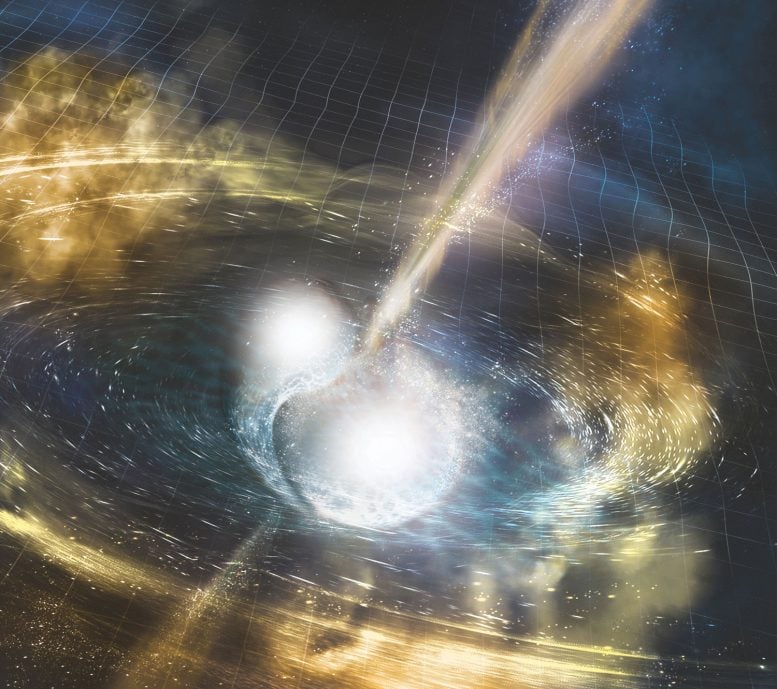
Artist’s illustration of two merging neutron stars. The narrow beams represent the gamma-ray burst, while the rippling spacetime grid indicates the isotropic gravitational waves that characterize the merger. Credit: NSF/LIGO/Sonoma State University/A. Simonnet
In the end, the team’s results were not only in agreement with GR, but they were also able to see effects that could not be studied before. As Paulo Freire, another co-author on the study (and also from MPIfR), expressed:
“Our results are nicely complementary to other experimental studies which test gravity in other conditions or see different effects, like gravitational wave detectors or the Event Horizon Telescope. They also complement other pulsar experiments, like our timing experiment with the pulsar in a stellar triple system, which has provided an independent (and superb) test of the universality of free fall.”
“We have reached a level of precision that is unprecedented,” Prof. Kramer concluded. “Future experiments with even bigger telescopes can and will go still further. Our work has shown the way such experiments need to be conducted and which subtle effects now need to be taken into account. And, maybe, we will find a deviation from general relativity one day.”
The paper that describes their research recently appeared in the journal Physical Review X,
Adapted from an article originally published on Universe Today.
For more on this research:
- Challenging Einstein’s Greatest Theory in 16-Year Experiment – Theory of General Relativity Tested With Extreme Stars
- Einstein Proven Right Yet Again: Theory of General Relativity Passes a Range of Precise Tests
Reference: “Strong-field Gravity Tests with the Double Pulsar” by M. Kramer, I.H. Stairs, R.N. Manchester, N. Wex, A.T. Deller, W.A. Coles, M. Ali, M. Burgay, F. Camilo, I. Cognard, T. Damour, G. Desvignes, R.D. Ferdman, P.C.C. Freire, S. Grondin, L. Guillemot, G.B. Hobbs, G. Janssen, R. Karuppusamy, D.R. Lorimer, A.G. Lyne, J.W. McKee, M. McLaughlin, L.E. Münch, B.B.P. Perera, N. Pol, A. Possenti, J. Sarkissian, B.W. Stappers and G. Theureau, 13 December 2021, Physical Review X.
DOI: 10.1103/PhysRevX.11.041050

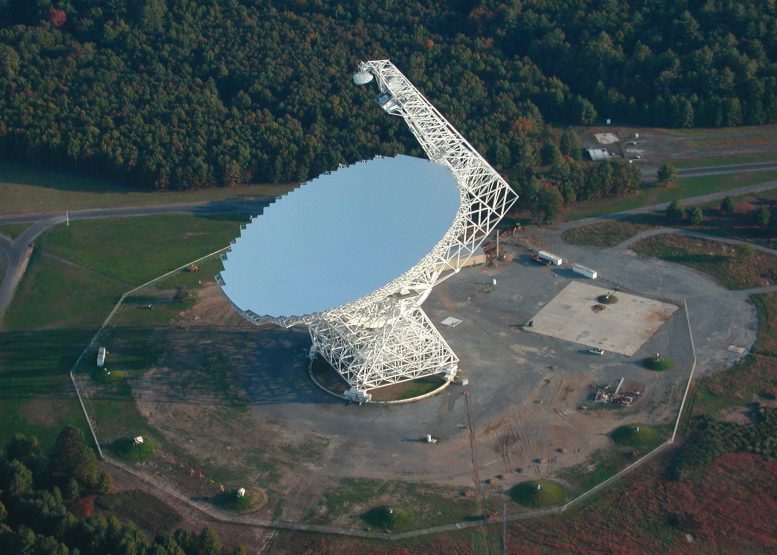

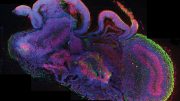
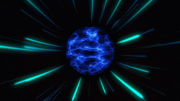
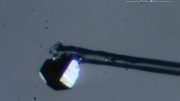
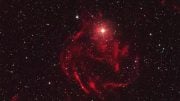
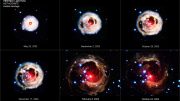

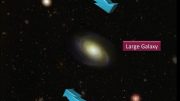
This is good to watch two consecutive stars as binary pulsars,to òbserve showing effects of General Relativity duè to Einstein.The same time,so Newton and Maxwell ought also be remembered for their contributions.
This is good to watch two consecutive stars as binary pulsars,to òbserve showing effects of General Relativity duè to Einstein.The same time,so Newton and Maxwell ought also be remembered for their contributions.
Ñewton,for his laws of Gravitation,which has modified in Einstein’s GR.Maxwell obviously for finding out speed of light.
GR is still being tested, over 100 years after it was proposed, but Anthropogenic Global Warming is “settled science”, and its supporters say that there is no need for any more research to investigate it ordocument it.
Which one is really science?